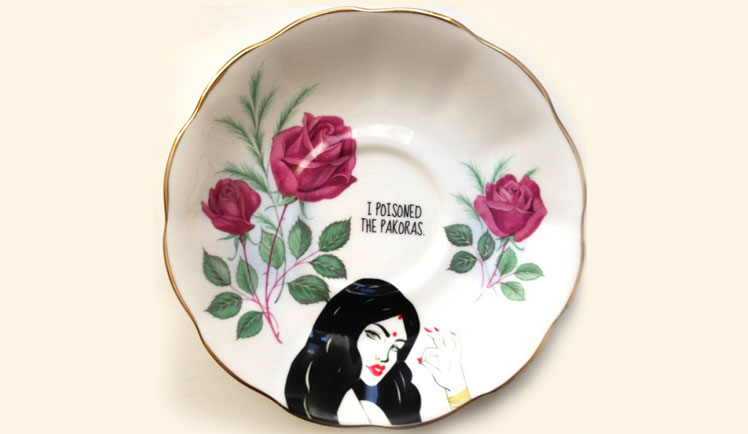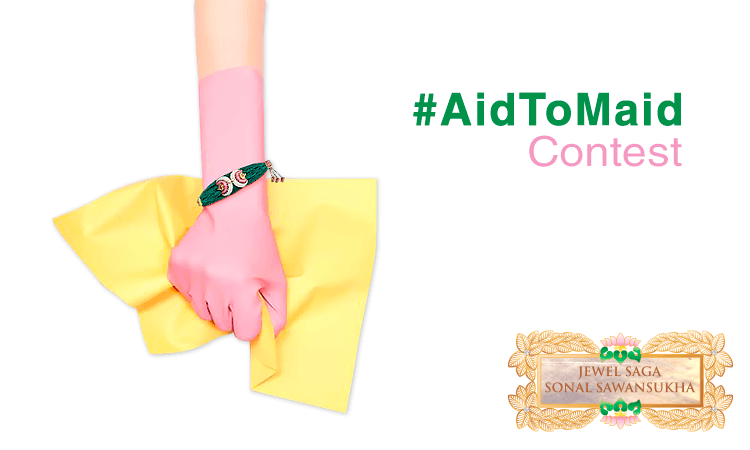We ‘Penne’ Down The Story Of Chef Sanjyot Keer, Who Mastered Pav-Bhaji At Age 13
- IWB Post
- December 13, 2017

Chef Sanjyot Keer’s story is a brilliant example of parenting done right. He was merely four when his home kitchen caught his attention. His parents and grandparents never stopped him from obsessing over baking, roasting, frying, and grilling, and he was never told not to go close to fire or knives. Under proper supervision, they let him follow his passion, toss away the doubts, and shape his dreams.
“Growing up, the kitchen was the warmest space I spent most of my time in. I remember watching my grandmother and mother cutting the vegetables into equal shapes, tossing them into the pan, and sprinkling magical masalas over them. The most exciting period for me was when we’d wait for the vegetables to get softer and gravy a little thicker. I always insisted on removing the lid and smelling the curry but to do so, I was required to stand on a stool as I was too short to reach the kitchen slab (laughs),” remembers Sanjyot.
Lettuce…ahem… let us indulge in a fun conversation with the chef himself and make him reveal things that were off the menu till now!
What is your earliest memory of being in food-coma?
Every evening, after my father would come back from work, he used to ask me about the dinner menu. If mom had cooked those veggies that I didn’t like eating, he would take me and my sister a couple of streets away for a pav-bhaji treat. And every single time, I remember earnestly taking note of the pav-bhaji walla’s cooking sequence. As years passed by, I had already mastered the pav-bhaji recipe in my mind. However, it was at the age of 12 when, I think, I made the best pav-bhaji of my life. I was so proud of myself.
You once mentioned how big an inspiration your granny is for you. Talk about her.
She was a native of Punjab, Pakistan, before the partition and as you can guess, she was well-aware of the North-Indian cuisine. When we shifted our base to Mumbai, she would often emphasize on the right method of preparing curries. According to her, modernization has lessened the tadka feature and blunted the thickness of the gravy.
Did she ever share any secret recipe with you?
So there’s this garam masala that she taught me and my mother to make. It is comprised of 28 different spices, which are only known to the three of us and I use a pinch of it in almost every Indian dish I make.
How did you take this interest forward?
I chose Home Science as the optional subject in grade nine and 10. Since there were more girls than boys in the class, it was all the more fun (winks).
As one of the few boys in the batch, were you ever teased for making this decision?
Never. In fact, I was appreciated for the little knowledge and experience I had gained from my food-loving family.
How did studying at the Institute of Hotel Management and, later, training at various fine dining restaurants polish you?
Since you are supposed to invest your time and energy into every dish you prepare, you can’t be half-hearted about it. Second, you can’t be intolerant of the long processes that are involved in cooking. One must be ready to accept and learn from failed experiments. So these are the major lessons that I learned from my formal education – to remain patient during the cooking process and also while dealing the customers.
What was the first dish that you made for your online channel – Your Food Lab (YFL)?
It was a pizza dosa. I am extremely fond of street food and, as you may notice, most of my recipes are a blend of Indian street food and modern flavors.
You are, undeniably, good at making east meet west. From Peri Peri Dosa to Khakhra Sandwich, we’re spoiled for choices.
Thank you!
Is there anything you’re yet to master?
I’m really looking forward to traveling to the Far East to learn about the Oriental style of cooking.
Talk about a new experiment that has won your taste buds.
It has to be the blending of basil leaves with chili. You can use this combination to make chutneys, sauces, and as toppings. Fact: put herbs and spices in recipes to merge their fragrance and taste into the food. Never let them overpower the actual aroma of the food.
You started using social media to share recipes in early 2015. Talk about the market and the challenges you faced.
When I started, there were only a couple of online channels in India that were a year old. The viewership was still building and the idea of growing one’s business on Facebook and Instagram was slowly rising. It was this golden period that proved extremely beneficial for my channel. Thankfully, I was on time and so, there weren’t any big hurdles to handle. Of course, planning content before every video and later, executing the idea and making it look appealing on the screen is still a challenge for every vlogger. My first few episodes were appreciated by the audience and so was the trend of quick-food. Today, I’m blessed to enjoy the company of more than 1.5 lakh people from India, Pakistan and many parts of the UAE and the US.
What’s in the future for YFL?
By early 2018, my team will put all my recipes on the website and the YFL app, which is in the process of getting launched. These recipes will be present in more than 10 languages catering to people from most parts of the world. These regional languages will make things easier for people who aren’t very tech-savvy and don’t understand English.
Also, the app will act as a complete kitchen guide for the beginners. From how to hold a knife to how to wash and cut vegetables, we will help our users master the basics. Fingers crossed!
We wish you all the best, Chef!
Has his story left you egg-cited? Let him know in the comments below.
- 0
- 0












